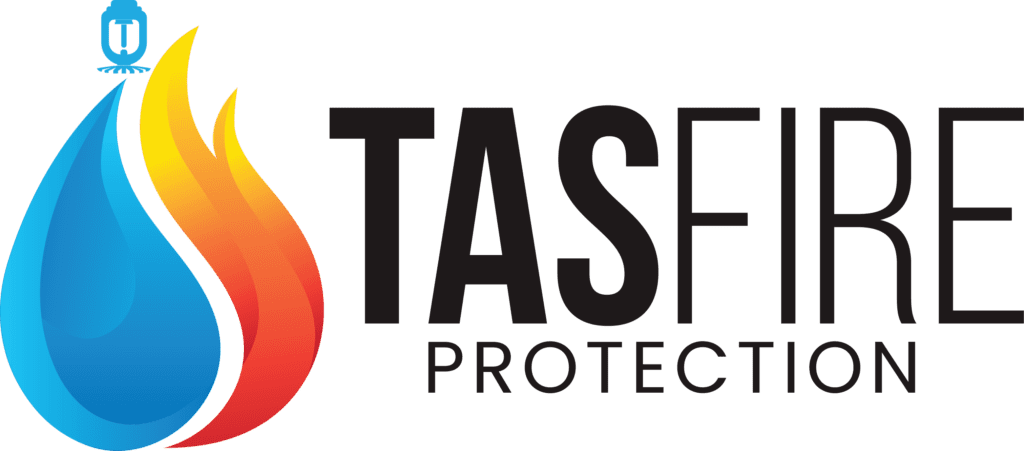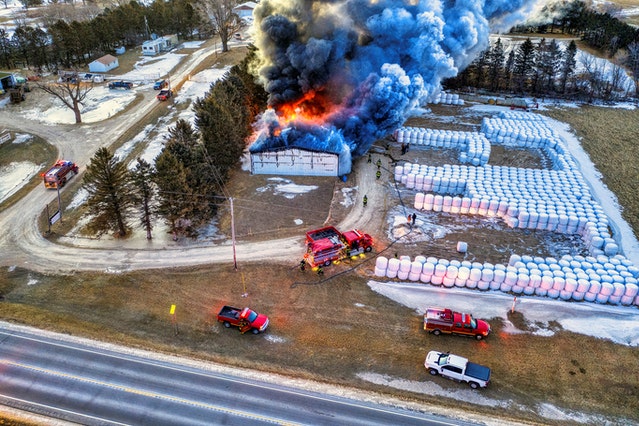7 Steps to Help Prevent the Spread of Fire in Warehouses…
Warehouses are considered a vital part of any operational enterprise. They act as the asset keepers for businesses as the stocks and products the company manufactures are kept in the warehouses and are distributed from there according to the demand for the product. Since most of the goods the company produces are stored in warehouses, a single fire ignition can likely cause millions of dollars of damage to the company and wastage of suitable raw materials. For example, if a company that manufactures electronic goods stores manufactured items in its warehouse, the chances of a fire being caused by electrical energy are very high. Since all of the objects present there are electronic, it takes no time to spread fire from one to another, causing a catastrophic effect that leads to a hard blow on your business financially.
To avoid this, it is critical to secure the premises and interiors of good warehouses, ensuring that no amount of stored goods and stocks are at risk of fire and that if a fire breaks out, it is immediately recognized and put out in the safest way possible. Now you might have a question about how you can prevent fire breakouts in your warehouse. Worry not, as this article is a walk-through of the seven most effective steps to prevent a fire outbreak in a warehouse. These steps will enable you to have a protective shield around your warehouse against fire accidents, thus keeping your quality products safe from harm.
Step 1: Fire Protection Laws
As we discussed, it is crucial to have a warehouse fire inspection checklist. But before we delve into that, let’s discuss the fire protection laws in place when it comes to an industrial setup. Being aware of the fire prevention acts and their regulations is always the first step in the warehouse fire fighting system. All fire protection laws demand that workplaces and storage warehouses go through a set of precaution protocols and safety assessments to ensure the risk of causing fire damage is as minimal as possible. According to the fire prevention rules, the first step is to identify the areas and factors where a fire can cause a damaging effect. Like any accident, this part is vital in preventing a fire outbreak. If we know the aspects of how and where a fire can break out, it will be easy to devise a plan to deal with such scenarios.
The next one is to have a deep analysis of a proper census of the worker strength who would be at risk if a fire ignition breaks out. This plays another major part in the strategy, as the strength of the inhabitants at the facility will give you data on how much fire safety equipment and escape routes should be provided to attain a 100 per cent safe evacuation rate.
According to the fire protection laws, the third factor is reducing the risk elements. If your warehouse and the whole facility have fire-prone areas, then develop an optimized plan to reduce the risk elements of these parts so that the chances of a fire can be reduced.
The final stage in following the fire protection laws is training and improvement. In every enterprise, there should be a proper training program to enable the employees working in the warehouses to know how to react to a fire accident caused in the workplace and how to protect themselves and their co-workers. Prepare them for fire drills and other activities to help them with actual fire risk and analyse their performance. Then, according to that data, give personalized training for the employees working at the warehouse so that even if any failure is faced, some other person or their co-worker can back them up in need.
Step 2: Fire Alarms
When it comes to the warehouse fire safety checklist, a vital entry on the list is fire alarms. A fire protection system is vast as it includes many small and large components, which makes it a substantial and foolproof system that acts against any amount of fire outbreak. But for all that to work, detecting the fire hazard is essential. That is where the fire alarms play an early part. A warehouse, comparatively, has a vast surface area and high ceilings to accommodate and store more goods in the facility. If you do not choose to install fire alarms as a fire safety measure, you might have to deal with economic and other consequences that happen because of unrecognized fire breaks at your facilities and warehouses.
A fire alarm system in your warehouse helps you notify all of the working personnel about an impending accident and aids in an immediate evacuation protocol at the earliest possible. This will reduce injuries and damage to personal goods and give you a head start in putting off the fire before it starts to reach the manufactured goods section. In the case of a fire, recognizing the hazard’s presence is the best way to minimize the damage it can cause.
Step 3: Maintenance of the Electric Network
A warehouse is a vast facility that can accommodate goods and laborers in commercial quantities. This calls for multiple electrical circuits to keep the place regular and working, and when compared to household electrical arrangements, a warehouse circuit network is much more extensive. Therefore, the larger the course is, the higher the risk of a fire hazard. To avoid this, maintain the electric circuits and networks in your warehouse correctly with the help of an electrical contractor.
A single circuit failure or a short circuit can cause a spark that will cost you a fortune worth of high-quality goods. It’s not just about maintaining it; it’s also about the proper installation of the electric system at your facility. Ensure the electrical contractors installing the electric system at your warehouse can handle such a vast surface area and are properly certified to work in an industrial environment. And when it comes to maintenance, make sure you do a thorough weekly and monthly check-in on the electronic circuits to detect any failed equipment or wiring, which will help you replace that specific part at the earliest.
Neglecting the dangers of regular fire inspections on your electrical circuits and networks can cause a violent fire outbreak, costing you a much more significant loss, so do not make that mistake.
Step 4: Regular Checkups and Maintenance of Machinery and Heat Management Apparatus
In a commercial industry setup, the role of machinery, and other cooling and heating apparatus, is inevitable. In a warehouse environment, there is a lot of mechanical machinery work, which involves the loading and unloading of goods, cranes for heavy lifting, and other systems that operate for an easier workflow. Since there is a lot of heat generation involved in these processes, a sufficient number of heat management systems are also present. And as we all know, heat is a contributing element to fire. A heating misplacement can cause a catastrophic fire in any setup and cause economic consequences. Overheated machinery and a poorly maintained heat management system are the most common causes of a factory or warehouse fire. To avoid this, regular fire inspections and checkups of your machinery’s proper operation and regular maintenance of the heat management setup are recommended.
A piece of overheated machinery would directly affect your heat management apparatus, which can cause more than a flame that would cause a violent fire in a warehouse. Also, while you are setting up the machinery and heat management systems at your warehouse, consult only with professionals, as they will be more aware of the technical sides of the fire system installation, which gives you a safer environment to work in. After installing these systems, make sure to conduct regular fire inspections to check if there are any pieces of faulty components and replace them immediately to avoid further hiccups.
Step 5: Proper Security Systems
Arson is one of the fundamental aspects of an industrial fire. Without proper security alarm, it is easy to cause a fire accident involving arson, and the damage is fatal and quick. You might not get a lot of time to reverse and minimize the consequences. And also, a warehouse is where you store expensive goods, and there is a lot of machinery that also costs a fortune. Even if some mis-happenings occur, they can be avoided in the first place if the place is tightly secured. Install security cameras around the warehouse to ensure no dangerous activities are being done near the fire-prone areas. And if so, you can immediately be notified through the security cameras and prevent any actions that could cause a fire hazard.
Another advantage of security cameras is that they are an extra pair of eyes inside and outside warehouses. It is not humanly possible to supervise every nook and corner of a facility yourself. Still, with a security camera, you can examine the premises better and find out if any malfunctions are happening or if any flammable materials are being used carelessly. This will help you immediately halt the process and warn the employees about the possible danger.
Step 6: Proper Organization of Materials
The next thing on the warehouse fire fighting systems list is to have an organised space in your warehouse. This might seem like a simple task, but this is an essential aspect of preventing warehouse fires. A proper arrangement of the warehouse inventories and materials can reduce a lot of fire risks. For example, suppose a fire has been breaking out in the facility. In that case, if the materials and pathways are not adequately organised and groomed, it is tough for the inhabitants to get out of the facility through narrow spaces and tiny passageways. This will increase the rate of casualties and cause a lot of economic loss. Also, in a congested and tightly packed warehouse with more goods than it should accommodate, it is very easy for a fire to spread swiftly across the whole building. Another risk of having an unorganized warehouse is that you would not know the locations of fire safety tools like fire extinguishers or fire hoses. Not being able to find the necessary tools to prevent the fire from spreading and getting stuck in a place where the fire is spreading quickly is a nightmare. And this can be easily avoided by keeping a specific area for fire tool arrangements and always keeping a clear pathway to this area.
Step 7: Installing a Proper Fire Safety System
Installing regular fire safety systems and tools can only help you in a limited way, and it can only be implemented in a limited capacity setup. And this is why installing a proper fire safety system to fight against a warehouse fire is essential. Choosing an efficient fire safety company to take care of your fire prevention requirements would be the right choice to make for this. Please make sure all of their workers are certified professionals and that they take extra caution in setting up all the fire safety equipment. Systems like smoke detectors, water sprinklers, and fire hoses can only be installed by professionals trained to do the technical side of the job.
Contact Us (905-870-7779) for a Free Consultation!
—

About TAS Fire Protection
TAS Fire Protection offers comprehensive and cutting-edge fire protection and security services to commercial, industrial, and high-rise properties. Our team of highly skilled professionals has years of experience in installing, maintaining, and inspecting fire alarm systems, fire sprinkler systems, fire extinguishers, fire hydrants, security alarm systems, and more. We understand that fire safety and security is essential to the protection of lives and property.
> Learn More

